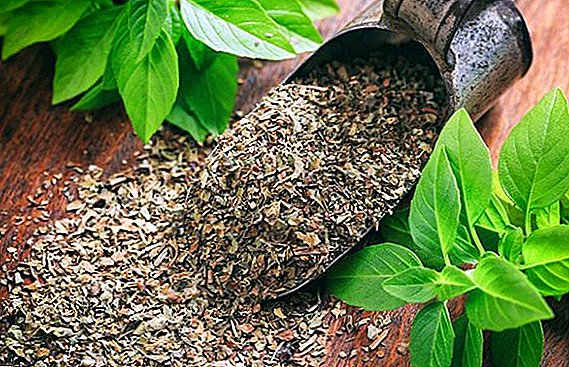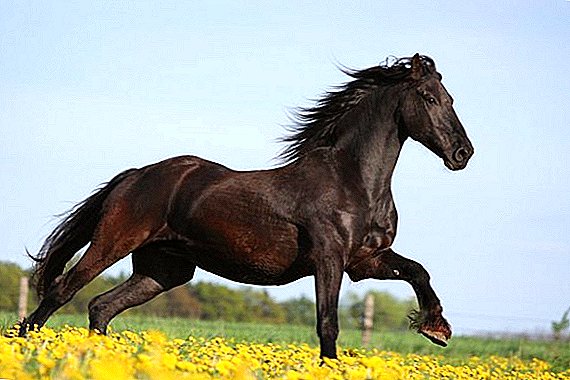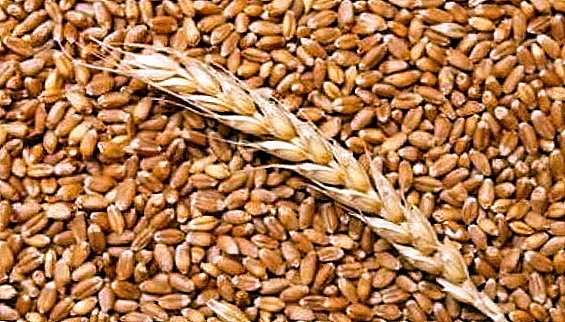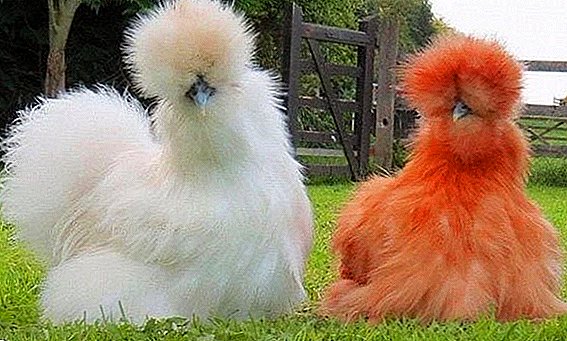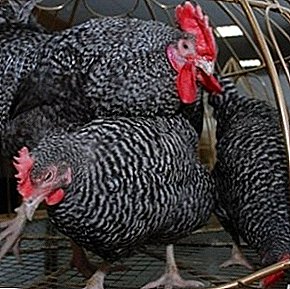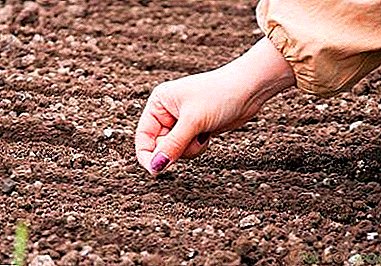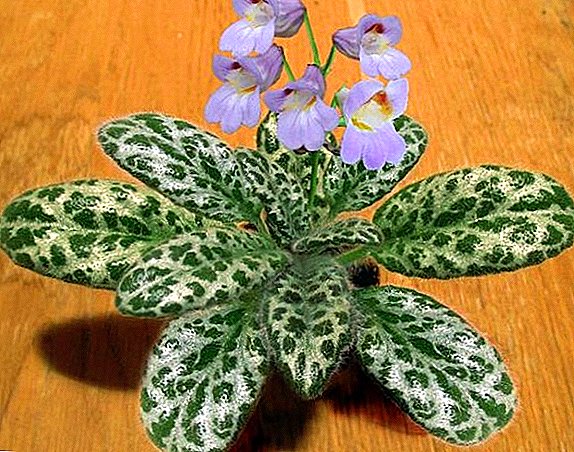 The world of flora is often striking in its diversity and all sorts of variations of plant forms. And here we will discuss one of these amazing gifts of nature, admiring tenderness and beauty. We will talk about a tropical South Asian plant called Hirita, and we will look into the rules for caring for it at home.
The world of flora is often striking in its diversity and all sorts of variations of plant forms. And here we will discuss one of these amazing gifts of nature, admiring tenderness and beauty. We will talk about a tropical South Asian plant called Hirita, and we will look into the rules for caring for it at home.
Description
Hirita is a perennial or annual (depending on the species) plant of the Hesnerian family, which has spread its habitat in the tropical territories of the South Asian region. Among the countries where it grows are included South China, India, Malay Peninsula, Sri Lanka, as well as the islands of Java, Borneo and Sumatra. Hirita prefers limestone and stony soils, mountain slopes.

As a rule, the Hirita has a razlapisty rosette of many leaves of oblong oval or pointed shape. Sometimes there are plants with two or more leaves. Basically, these leaves are pubescent, but often come across species with a smooth surface. Several stalks, the top of which are crowned with soft purple flowers, depart from such an outlet. In addition to this basic color, the petals of the buds can be bluish, cornflower blue and even pink and purple hues. In general, this plant resembles our violet.
Did you know? In Sri Lanka, days off, in addition to Saturdays and Sundays, are also the days of the full moon.
These flowers are propagated with the help of seeds ripening in special boxes, which are the peculiar fruits of this flower.
Kinds
Among the wide variety of wild-growing varieties of the Hirites (more than 200 species), four species are most often grown at home, and we will try to figure out the particularities of these species.
- Hirita Chinese, or, as it is also called, silver, differs from its relatives by a diversity of leaves, which combine in their color rich green and light silver colors. Also, the leaves of this plant are collected in the outlet and have more than 10 large fleshy oval-shaped petals. This is a stunted appearance, its height does not exceed 15 centimeters. There is a light down on the leaves and stems, and the pedicle of a deep red hue is topped with delicate violet flowers, gathered into inflorescences of several pieces. This hirita pleases with its bloom all summer.
- Hirita Lavender differs significantly from the previous species, first of all, in its dimensions. The height of this representative of the flora exceeds the mark of 40 centimeters. Its tall stems are occasionally covered with large, fleshy, light-green, ovate leaves. The lower leaves are larger than the upper ones, and a characteristic feature of this species is their resistance, that is, located on opposite sides of the stem. Like a bell, the flowers of this species are located on the top and have the appropriate shape. Their color is usually two-color and combines dark purple and pale purple or white shades. The lavender species also blooms with the arrival of summer and stops pleasing the eye closer to October, when, instead of pleasant-looking flowers, a long box appears (about 5 centimeters) with ripe seeds.
- Hirita Microbanan is a one-year representative of the Gesnerian family. It is not very high (about 20-25 centimeters). Its trunk is covered with large razlapisty leaves with accurately-pronounced characteristic streaks of reddish tones. At the base of the leaf grow small (up to 3 centimeters) orange-golden flowers. Flowering occurs in the summer months when the daylight becomes longer.
- Hirita Thiamine very similar to violet, especially leaves, which are small dark green spoon-shaped petals. They are collected in a rather voluminous rosette at the base of the plant, from which grow long (more than 20 centimeters) pedicels. 3-5 large bluebells of white color with characteristic blue or purple markings near the neck are crowned with their tops. This type of Hirite blooms at different times of the year, but has no pronounced periods of rest.




Plant Care
Like any other domestic plant, hirita also needs to create and maintain proper conditions of detention and care. Guided by the rules below, you can successfully grow and maintain in your home such a tropical flower.

Lighting
Whatever type of Hirite you choose, they all do not particularly well relate to bright light.
Important! This plant does not tolerate direct sunlight. The best option would be diffused light from the east or west window or artificial lighting.
At the same time, it is impossible to leave Hirita without any light at all, since in this case it simply will not bloom, suggesting that it is winter now.

In the noontime, it is also desirable to shade the plant from the light, because when the sun's rays are too intense, the leaves of the Hirites will turn yellow and curl, and the plant itself may die.
Temperature
If the lighting is very demanding, it is completely unpretentious in the temperature regime. For it, the usual ambient air temperature within + 18 ... +25 degrees will be optimal. In winter, it can normally grow and develop in more severe conditions, up to +15 degrees.

In winter, such a plant should especially be protected from drafts, since excessively low temperature and cold air currents can destroy this representative of the flora.
If in winter the temperature is high enough (above +18 degrees), then Hirita will bloom beautifully. It does not have periods of wintering or a slowdown if it is provided with the necessary conditions.
Learn how to grow plants such as: juniper, lavender, rosemary, savory, fern Asplenium, room thuja, coffee tree, azalea, kalanchoe, anthurium, geranium, orchid, spathiphyllum, violet, begonia at home.
The soil
As an optimal and balanced mixture, several types of soil are used. For example, combine sheet, light turfy ground and sand in a proportional ratio of 2: 1: 0.5. Another option for combining different types of soil is a mixture of hardwood, sod, humus soil and sand in a proportional ratio of 2: 3: 1: 1. As a finished land mixture, you can use the substrate for saintpaulia.

In order to prevent rotting and waterlogging of flower roots, it is recommended to add several pieces of charcoal to the drainage and substrate. This feature is caused by the increased sensitivity of the Hurites to an excess of moisture.
Find out what is important soil acidity for plants, how to determine the acidity of the soil on the site, as well as how to deoxidize the soil.
Watering
During the flowering period, it is worth watering the plant about once every two days, as it needs extra strength and nutrition to support itself at this time.
Important! To understand when it is worth watering the hirita, you just need to make sure that the top layer of the earth has time to dry out between the waterings. This mode will be optimal and will not lead to the appearance and progression of putrefactive processes in the rhizome of the flower.
It is best to use bottom watering so that moisture does not fall on the leaves.

Overdrying of the soil is not particularly dangerous for the plant, due to the extensive leafy rosette that protects the ground from drying out. But excessive watering will adversely affect the condition of the flower.
Humidity
Unpretentious and Hirita to indicators of humidity. It does not need to arrange special spraying, as these actions can even destroy the plant, causing disease and putrefaction of the leaves. This feature is explained by the presence of a light gun on the surface of the sheets, which does not allow water to be absorbed, which is why foci of mold and mold damage appear.

To maintain normal humidity, you should just regularly water your pet. If you are worried about him in the period of a long absence, you can install a flower pot on a tray with wet pebbles or expanded clay. This stand will support the moisture balance in the root zone of the plant.
As a top dressing of plants also use: "Chunky", nitroammofosku, "Kemira", "Ammophos", biohumus.
Top dressing
Top dressing should be made in the spring and summer before flowering. Basically choose universal fertilizers for flowering plants with a high content of phosphorus and potassium. It is best to dilute such fertilizer with water, because with moisture the plant will get nutrient and vitamin elements faster and more efficiently.
Important! Fertilizing can be no more than once a month, because excessive feeding can kill Hiritu.
Pruning
Pruning is not recommended to carry out often. The best option: before the beginning of the vegetative period and flowering, that is, in early spring, or in the autumn, when the plant ceases to actively bloom. Dry or yellow leaves should be removed. The same rule applies to dead stalks. Otherwise, it is often not necessary to trim the jiritu.

During cutting, you should act very carefully and carefully so as not to damage the whole leaves and pedicels, because they are very fragile.
Transfer
Hirita is a rather unpretentious plant and it does not need annual transplantation. You can carry out such a procedure once every two or three years so that the rhizome is not too crowded. The only rule that must be followed: the diameter of the pot must be less than the diameter of a hardwood outlet.
Did you know? The largest pot in the world was made by hand in 1985 in Britain. Its height is about two meters, and the circumference is more than five.
Breeding
Both annual and perennial varieties of Khirit can be bred at home. Below are four main breeding options for this tropical plant.
Seeds
One of the most popular ways of breeding chirit is seeds:

- After the seeds ripen in a box, they are harvested and planted in the ground when winter comes. It is important not to bury the seeds in the ground, but to leave them on the surface, since it is such a landing that the Hirites germinate.
- From above, the container can be covered with a glass sheet or a film flap in order to create a greenhouse effect with high humidity.
- Periodically, at the moment when you notice that the top layer of the earth has become dry, the soil should be watered.
- The maximum acceptable temperature indicator for sprouting chirite shoots is from +25 to +27 degrees.
- On the 13th or 15th day, the seeds will germinate. From this point on, watering is recommended using tools such as a syringe or syringe, so that the water does not affect the leaves of the plant and does not lead to putrefactive processes.
- A dive should begin when the first real leaf appears in the sprouts (initially two cotyledons grow).
Important! In the process of picking should be very careful with fragile shoots of Hirits. If you accidentally broke off one of the sheets, then it should be removed, and the damaged area sprinkled with pounded wood (activated) charcoal.
After successfully completing seating chirit, follow the rules of care and maintenance described above and be able to grow a healthy and beautiful plant.

Cuttings
The method of growing cuttings is much like the leaf, only here a cut of a Hirite, cut and dried and smeared with a fungicide, which has no mechanical damage and is relatively young (no older than 1 year) is planted in the ground. Such a stalk needs to be watered, making sure that the earth does not dry out much. You can also create a greenhouse for it with a film or polyethylene, set a 12-hour light mode (you can combine natural daylight and artificial light). Under proper conditions, such a stalk will sprout for approximately the fifth week of cultivation.

After the strengthening of new plants, they can be safely relocated to individual containers.
It is also possible to perform a similar operation with water. In the water, the stalk will take root for several weeks, after which the plant should be planted in a prepared container.
Important! It is best to cherenko hirita in March-April, in this case, you can get a flowering plant for the next winter.
Leaf cuttings
It is possible to propagate chirita and leaf cuttings. To this end, choose a symmetrical, healthy, without visible damage to the sheet. It is separated from the outlet with a blade, the cut is dried and smeared with a fungicide. Next, the sheet is placed in a small container vertically entirely or cutting off the upper part (to prevent the growth of the sheet itself). A plastic bag, a film or a piece of glass are put on top of the container and put it in a warm place with an average temperature of about + 26 ... +28 degrees. With good lighting (12 hours a day) and watering such a shank will rise in 1-1.5 months. When the sprouts grow, they can be seated in separate pots.

Interesting, but even a piece of leaf can be an excellent material for the withdrawal of new plants. To this end, a healthy and undamaged sheet is placed with its bottom side up on a flat solid surface. Using a blade, they are cut into strips approximately 5 centimeters long. At the same time, a cut is made perpendicular to the central core, so that in each part there is a segment of the middle core, which will play the role of a cutting, as well as two leaf wings on the sides.
Important! When reproducing chirit, this method does not use the lower and upper parts of the leaf.
The resulting material is planted in the ground in shallow potholes at an angle of 45 degrees and at a distance of 3-4 cm from each other. Then a little compacted fingers around the ground landing. Having processed the container with a fungicide, you will conduct a preventive measure against the appearance and development of putrefactive diseases.
After this, the container is placed in a warm place and covered with a greenhouse material (film, polyethylene or glass). Ventilate every day, moisten the soil in the tank with a tray with water and substrate. After 6-9 weeks, you will notice shoots.
Pasynkami
Another popular method of breeding hirita at home is the use of stepsons ("kids"). When germinating on the mother stem of the stepson, provide the opportunity for the four first leaves to form. Following this, you can gently unplug the baby from the main bush and deposit it in a separate container.

Difficulty growing
Despite the simplicity of care, Hirita also requires increased attention, otherwise you will encounter a number of difficulties. We have put together the main points in the list of problematic issues and their solutions:
- In view of the abundant watering, hirit can start to rot, therefore, you should strictly follow the rules of watering: during flowering, supply the plant with water no more than once every two days; at other times, you can water it once a week.
- The appearance of light brown spots on the leaves of the plant indicates that the flower was watered with excessively cold water. It is important that the water temperature was not lower than 20 degrees.
- If a chirite grows on one side only (as a rule, the one that is turned towards the light source), it means that it does not have enough light and it must be periodically turned by different sides towards the sun.
- The leaves can dry out in two cases: either it is a natural process of aging and withering away, or they have been burned by the sun. One way or another, the affected leaf needs to be removed.
- In case of mechanical damage or breaking of the sheet, remove the damaged element of the socket and sprinkle it with ground charcoal.

Here, perhaps, all the main problems that may arise in your tropical pet.
Did you know? In Japan, charcoal is often used in cooking, for example, it is added to cooking oil.
Diseases and pests
But not only errors in watering or lighting can affect the health of the plant. Natural forces, such as diseases caused by various pests, can also intervene. Hirites are often attacked by a mealybug, spider mites, scarab, whitefly and thrips.
- With the defeat of the shield. In this case, you can find on the back of the sheet characteristic brown blotches (this is a clutch of the parasite), and the leaves of your plant will be covered with a sticky and viscous bloom. When inaction, you can bring on your pet even greater consequences in the form of the development and progression of black fungus. To prevent this from happening, use an insecticide solution. ("Aktellik", "Aktara") or remove pests manually using the available tools (old toothbrush, cotton swab).
- With the defeat of mealybugs. To determine such a parasite is also quite simple, because the plants will have characteristic clusters of white lumps, like cotton wool or moss. There may also be sticky plaque. In the fight with the insects, you can use the same insecticide ("Biotlin", "Fitoverm") or use the manual method.
- With the defeat of spider mites. This pest leaves characteristic holes on the leaf and causes it to yellow and dry. Also on the back of the sheet you will notice a slight cobweb. Such a pest can be destroyed with chemicals for spraying. ("Neoron", "Karbofos") or soap solutions. But manually you can not handle the tickbecause it is too small and almost invisible to the eye.
- With the defeat of thrips.These pests leave white masonry, which can be seen if you look under the leaf of a plant. The struggle with them also consists in spraying with special solutions ("Bankol", "Vermitek").
- With the defeat of the whitefly. If clouds of white-winged midges are swarming around your plants, it means that your pet was struck by the whitefly, which can be defeated by special chemical solutions (Akarin, Aktara).






Hirita is one of the most commonly grown plants at home. It not only pleases with a lush symmetric rosette of leaves, but also attracts the eye with beautiful buds of delicate buds. And although this flower is far from the most difficult in domestic breeding, it still requires compliance with the rules and recommendations for the care, and often undergoes natural and mechanical damage. But if you adhere to the prescriptions, you will turn the process of growing, caring and breeding Hirits into a real hobby that will bring you joy.
Feedback from network users




